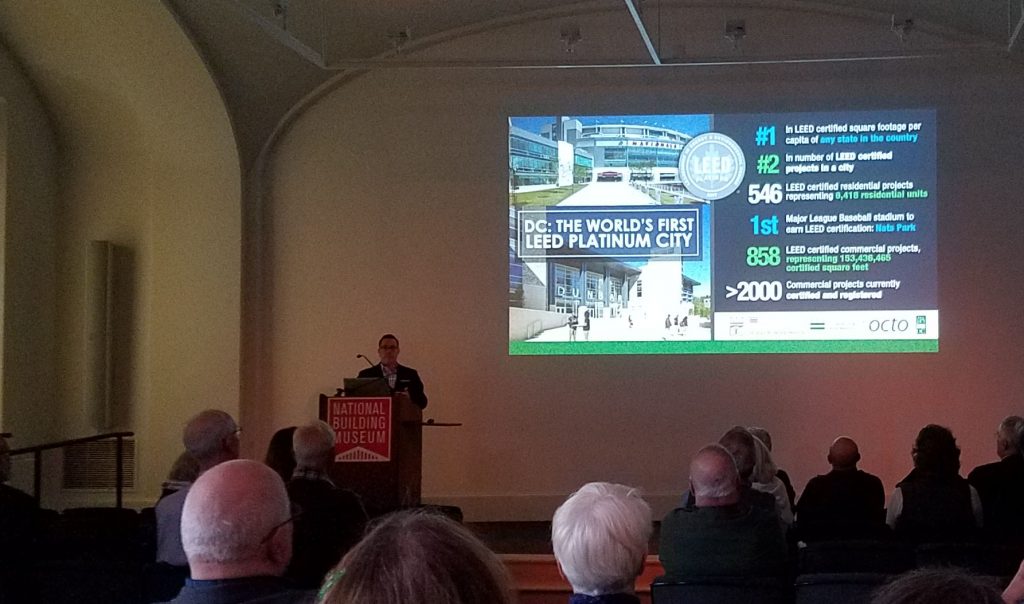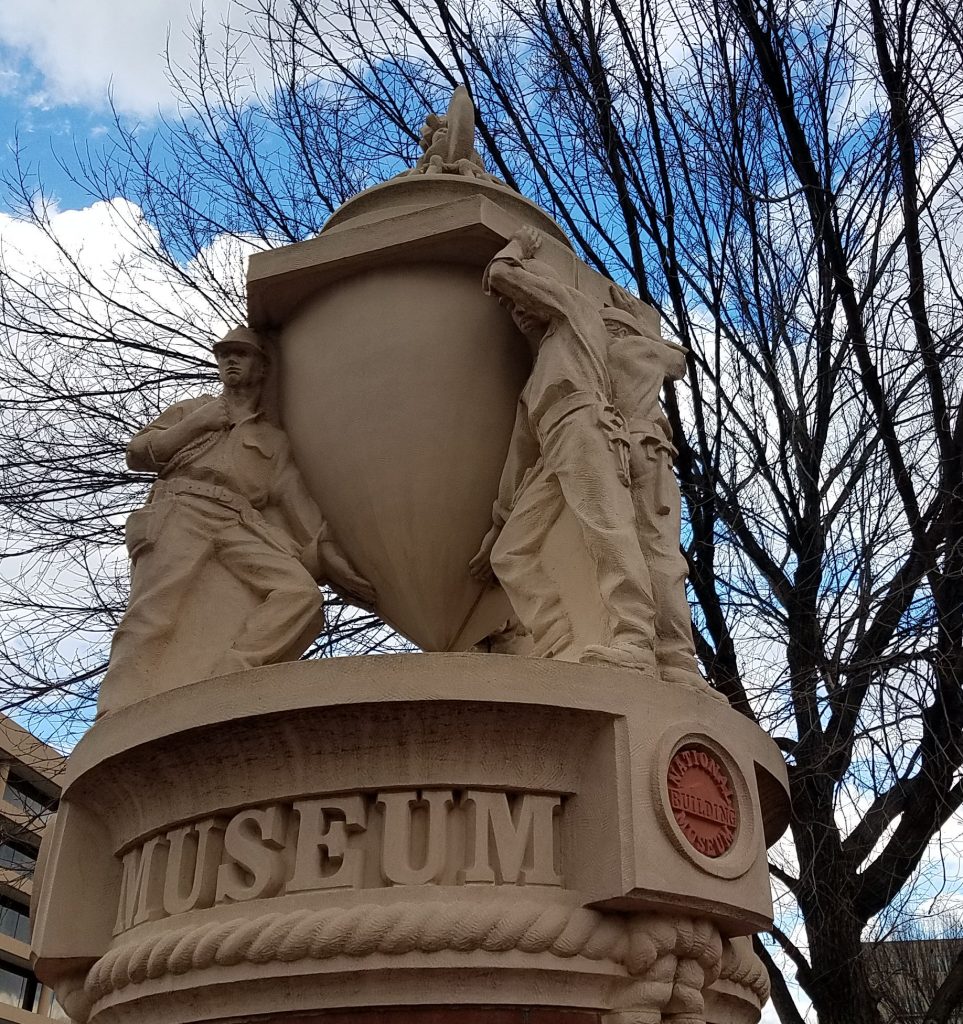Washington has become one of the world’s “greenest” cities in the last few years. The city won a LEED Platinum rating last year, the first in the world, for its commitment to sustainability. Being green means lots of things, but it generally is good management of buildings and land.
I went down to the National Building Museum for a program by Jay Wilson, Urban Sustainability Administration at DC Department of Energy & Environment, who talked about some of the things Washington has done and will do.
Washington sits on the confluence of two rivers, the Potomac and the Anacostia, much of the area is covered with pavement or buildings and lots of the land is flat and low. This means that storm water management is a key management concern.
Much of Washington’s sewer system was build a century ago. They did a wonderful job back then, but their situations and goals were different. For example, sanitary and storm sewers are combined. This seems like a bad idea today, since rainwater is fundamentally different from sewage and why overload the system? But the system was designed with horses in mind. In those days, streets were covered in horse manure. The rain washed this into sewers and so rain runoff in those days was not so different from sewage. The combined sewage system made sense in those days.
Rain gardens and green roofs are important ways the District address storm water management today. Both these examples of green infrastructure filter and slow water flow, making it available to plants, enhancing groundwater and mitigating overflow into the sewers. Green roofs and rain gardens are also beautiful, provide wildlife habitat, and like most green infrastructure they are to some extent self-renewing.
Washington is trying to become more bicycle friendly and I can attest to the fact that they have done a good job. I have been riding around the area for more than 30 years, so my opinion was based on experience. However, improvements make people demand more improvement. I don’t think that many bicyclists are quite as positive as I am. Most bicyclists are younger than I am and may not remember how it was before and us old guys sometimes forget.
The National Building Museum is a good venue for programs like this. This is the place where I got my first good look at Cross Laminate Timber, during the Timber City exhibit and heard some good lectures about it. One of the great things about Washington is all these sorts of programs available free or at low cost. A big part of quality of life for me is this kind of opportunity.
We have grey infrastructure, green infrastructure and intellectual infrastructure.


